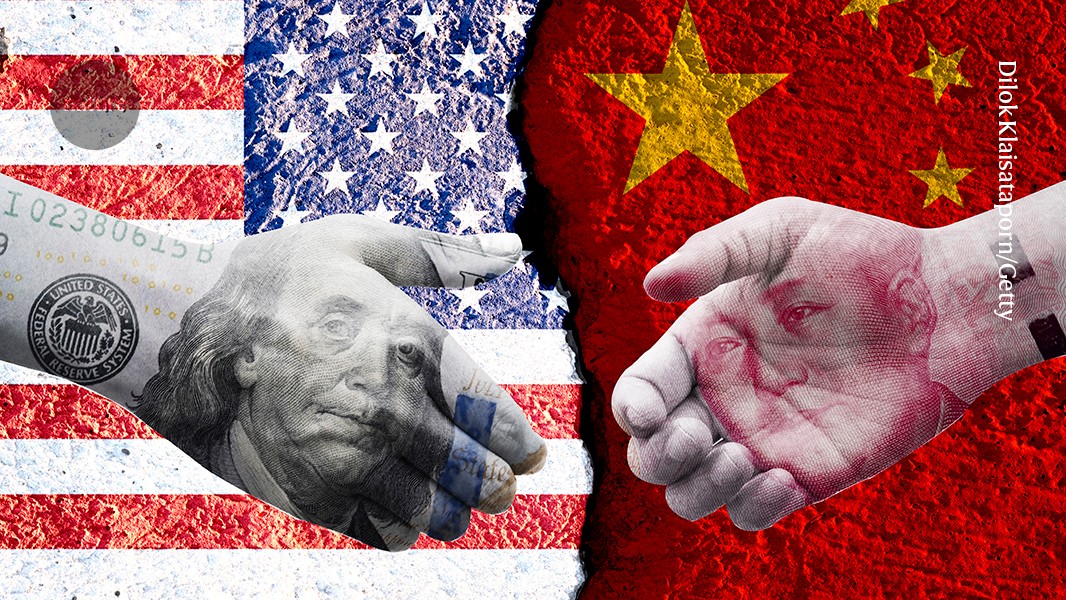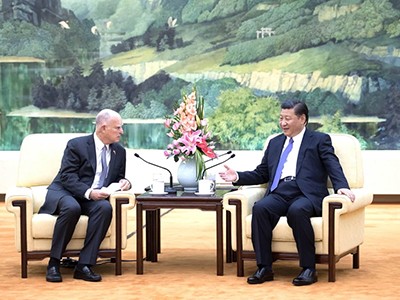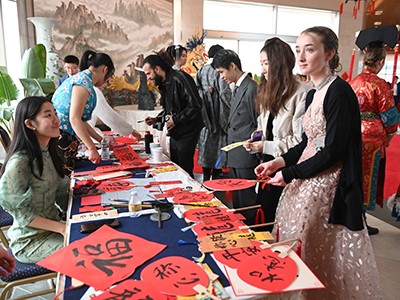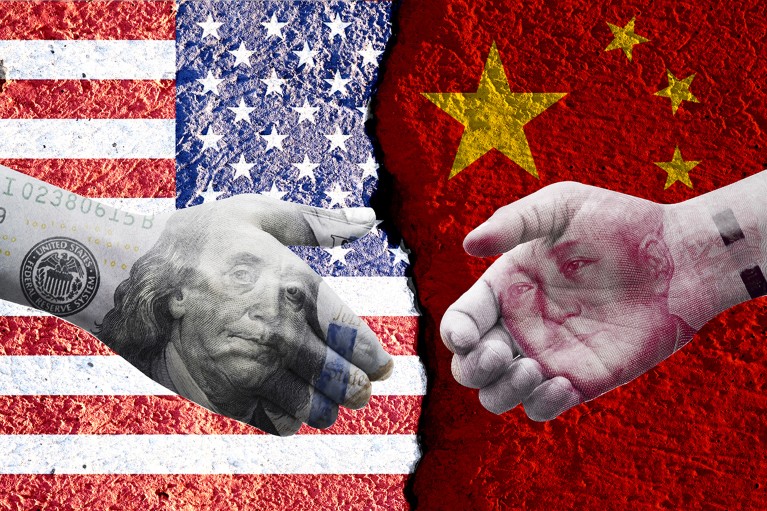
Scientific partnership between the United States and China is at risk — and it cannot be allowed to deteriorate.Credit: Dilok Klaisataporn/Getty
As the political relationship between the United States and China has frayed, the scientific ties between them have become thinner and more fragile. This is a dangerous trend. Working together, scientific communities in the two nations have the potential to create technologies and ideas that will benefit the world — such as clean-energy innovations and improved drugs1. But if these communities are driven further apart, the flow of discoveries will slow, and scientists will be less equipped to respond collectively to crises.
The incoming administration of President Donald Trump is likely to amplify the current bipartisan consensus in the United States to be tough on China. Over the past decade, both Republicans and Democrats have increased tariffs and restrictions on Chinese imports. Last month, after much wrangling, the two countries renewed the US–China Science and Technology Agreement (STA), a framework that supports collaboration between government departments. This is a helpful step, but one that has put a spotlight on the many points of contention between the countries’ political leaders.
To bridge the gaps, scientists must become more politically savvy and active in setting the terms of engagement. US and Chinese researchers must come together to choose and champion ‘safe zones’ for joint work: topics that offer high value from collaboration and minimal sensitivity to geopolitical issues2.
Weakening scientific ties
Division need not be a foregone conclusion. For example, during the cold war, while political leaders were banging shoes on desks, science served as a conduit for ideas and understanding. Scientific establishments in the US and Soviet blocs forged many valuable safe zones, such as geology and polar science during the International Geophysical Year in 1957–58. They also founded the International Institute for Applied Systems Analysis, a research institute in Laxenburg, Austria, to foster scientific cooperation3 (see Nature 575, 257; 2019).
The United States and China also have a history of close collaboration. Since the late 1980s, millions of Chinese graduate and undergraduate students have travelled to the United States, and tens of thousands of US students have studied in China (see ‘US–China collaboration’). The numbers soared in the late 2000s, and the two economies and scientific establishments have become deeply intertwined4.
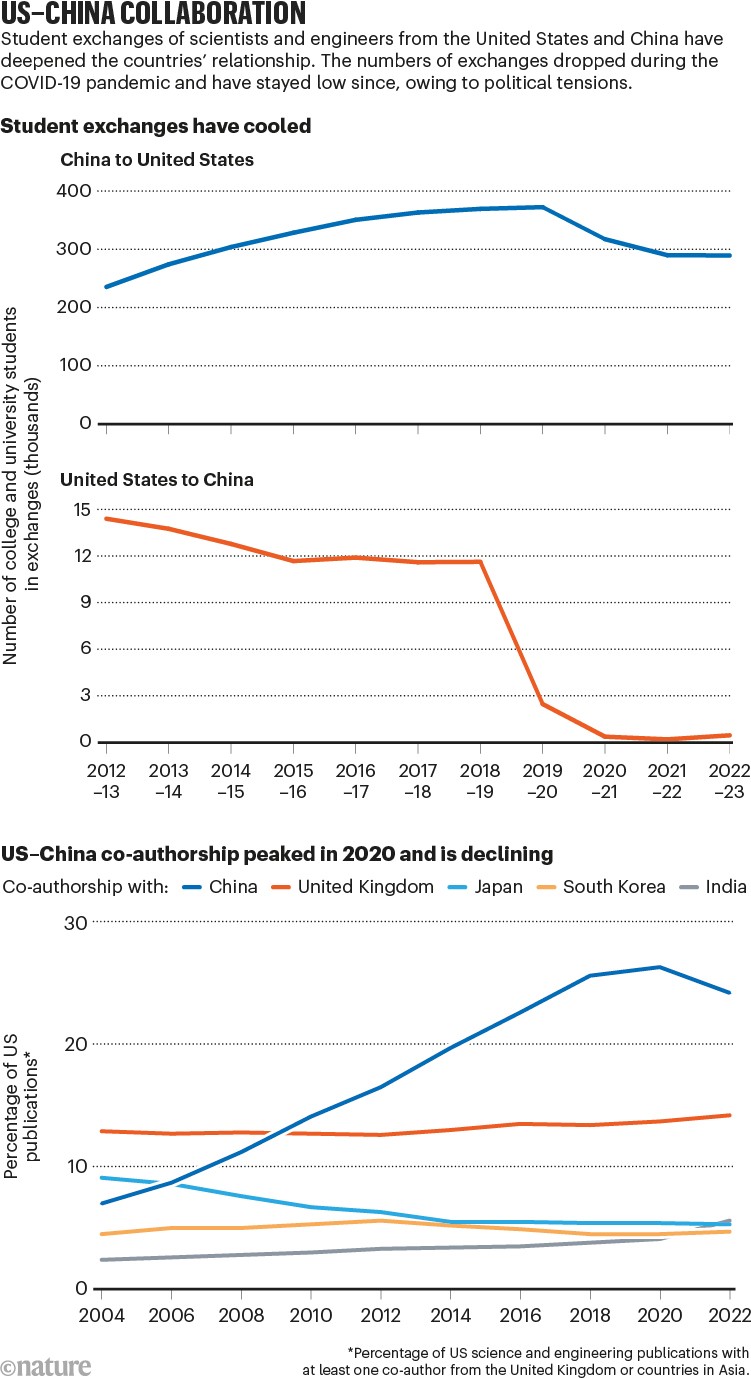
Source: Top, go.nature.com/4GHJ; middle, go.nature.com/N7U9; bottom, National Center for Science and Engineering Statistics, Science-Metrix and Scopus
This interdependence magnifies the potential gains from future collaborations. But it is also spawning real and imagined risks.
The interconnectedness of scientific communities — which ideally operate with few restrictions on knowledge sharing — can fuel political suspicions that information exchanged with the other side could jeopardize economic growth and national security. Because national security is increasingly relying on technologies in the civilian economy, such as artificial intelligence and computing, the line between economics and security has blurred5.
Each country has its own political narrative to justify scaling back collaboration. In the United States, a bipartisan consensus emphasizes protecting national security and restoring manufacturing prowess. Politicians forget, but similar attitudes prevailed in the country in the 1980s, in the face of a perceived threat from the rise of the Japanese economy. One of the solutions was more collaboration, including cross-border investment6.
How provinces and cities can sustain US–China climate cooperation
In China, a prevailing narrative is that the United States has reversed decades of openness and is now shutting out producers and innovators on the Chinese mainland. These suspicions are fanned by fears that the United States is aiming to weaken the Chinese military and, as in the United States, by the desire to invest in national industries that are seen as strategically crucial.
The precipitous drop in the flow of students from the United States to China since 2020 illustrates the dire situation (see ‘US–China collaboration’). During the darkest period of the COVID-19 pandemic, the number of US scientific visitors to China plummeted essentially to zero; the flow from China to the United States fell to 77% of peak levels between 2019–20 and 2022–23. Also inauspicious is the reversal of a decades-long trend of growing cross-border authorship of scientific articles, an indicator that lags behind exchange of ideas7.
As the countries come to know less about each other, these problems will worsen. It will become harder for each country to sift its national interest from the collective value of strong teamwork. Once fissures open, they can quickly become crevasses. This is evident in US political decisions to require further reporting on the nationality of project personnel and members of international collaborations, especially those involving technology transfer and compensation received abroad.
The US Chips and Science Act, for example, prohibits individuals receiving federal research funding from participating in “Malign Foreign Talent Recruitment Programs” — the definition of which can ensnare schemes supporting leading scholars in China. In July, the US National Science Foundation (NSF) awarded US$67 million to the University of Washington in Seattle and Texas A&M University in College Station for a project to evaluate and mitigate threats from foreign interference and risks to US research.
When funders take on these dual roles — supporters and punishers — it becomes harder for scientists to secure reliable funding for work involving cross-border collaborations. Political landmines can appear suddenly, sometimes destroying careers and research programmes. In 2018, for example, the US National Institutes of Health (NIH) and the US Department of Justice initiated investigations into foreign influence on research. The publication rates of US scientists involved in collaborations with China have since fallen, whereas those of scientists with other international collaborators have increased8.
By focusing on three areas, scientists can help to bridge these political chasms.
Choose safe areas
One strategy to reinvigorate collaboration requires carefully identifying safe zones2. Although no scientific activity can be insulated completely from geopolitical risks, the chances of blowback are higher in some areas — for example, machine intelligence or pharmacology — than others, such as polar science or cosmology.
Why US–China relations are too important to be left to politicians
The boundaries of safe zones will always be blurry, because they are shaped by shifting scientific and political factors. But some rules of thumb can be followed. In identifying risk, for example, it is important to distinguish the instrumentation enabling cutting-edge science from the science itself. Some nations might hesitate to share the details of research on sensors or semiconductor chips because these tools have real or imagined military value. But those concerns can remain distinct from the joint use of data produced through the use of these tools.
China–US collaboration on science should focus on safe areas. To facilitate this, the academies of science in both countries should convene a joint panel to formally define the concept and identify specific high-priority areas for funding. When possible, funding agencies, such as the NSF and its counterpart, the National Natural Science Foundation of China (NSFC), should do the same.
A clear strategy could provide more political cover for funders, as well as a guide for securing private support. Building such a framework during the Trump administration amid anti-Chinese rhetoric will be challenging, but it is likely to be politically durable, and the rewards could be huge.
With clarity on these safe zones will come awareness that some scientists are continuing to operate outside them. When that happens, it should be done carefully and with risk-management strategies.
Approve funding streams
The scientific community must work with funders to identify sources of support for cross-border collaborations. In China, most of such funding comes from existing mechanisms — perhaps with special allocations for collaborations between US and Chinese scientists. In the United States, bigger changes are needed.
Federal funding agencies such as the NIH, NSF and Department of Energy should explicitly clarify the fields in which collaboration is safe. However, federal funding is probably limited in what it can do, because political meddling — real and imagined — is large and growing. Last August, NIH director Monica Bertagnolli made statements acknowledging (but not really fixing) anti-Chinese bias in the research community. This reflects a larger problem with federal funding: scrutiny of China’s role in the US scientific enterprise is mounting quickly but unpredictably, which adds to the perceived risks and administrative burdens of engaging in collaboration9.
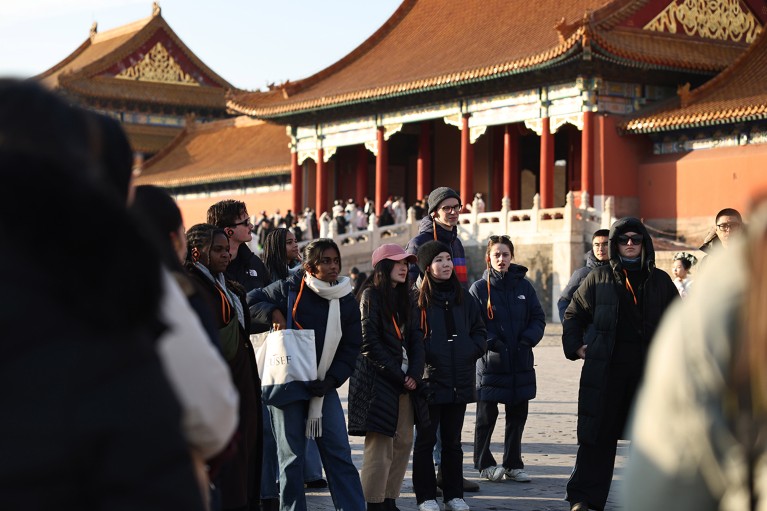
US students visit the Palace Museum in Beijing.Credit: Bian Zhengfeng/China News Service/VCG via Getty
A special challenge in the United States is the growing backlash against US researchers receiving funding from China or hosting students and postdocs through programmes such as the China Scholarship Council. These programmes, aimed at supporting the training of China’s future scientific workforce, offer great value: links forged during the early career stages can lead to long-term collaborations and help to diffuse misunderstandings, improving the bilateral relationship. (All six of us have benefited from such interactions.)
However, barriers to hosting Chinese visitors in the United States are growing, and China’s policy is shifting to place less emphasis on overseas experiences. US agencies must clarify that hosting scientists supported by government funds is acceptable for work in safe zones, while adding more safeguards for projects outside them.
In China, the situation is different. Few US scientists have directly conducted research there; most engagement is done through student and postdoc exchange. Providing more funding for US scientists to collaborate without relying on the budgets of their hosts would help to avoid the perception that US scientists are in the pocket of China’s government, which provides around half of the funding for basic research in that country.


